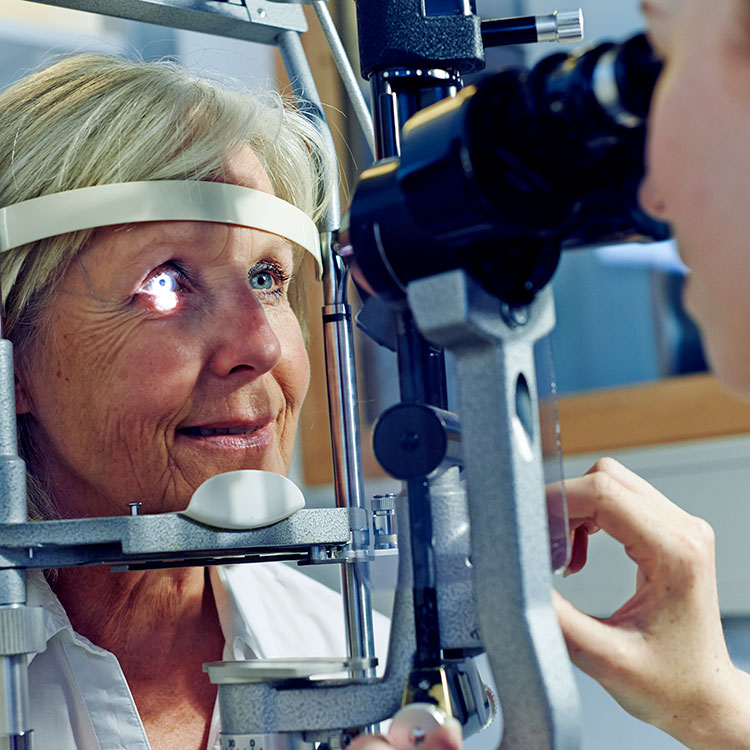Did you know that having a regular eye exam could potentially save your life? The eyes are said to be the windows into our overall health. Which is why regular eye exams are not only important for our vision but also vital for disease prevention and the detection of serious medical conditions. Below are just a few ways that a routine eye exam, can aid in the prevention of disease and potentially save your life.
Aneurysm
An aneurysm is a bulge or “ballooning” in the wall of an artery. The causes of aneurysms are often unknown, and while most aneurysms are not dangerous, some can rupture, leading to life-threatening complications. During a comprehensive eye exam, an eye care provider can detect increased pressure in the brain, including swelling of the optic nerve or bleeding into the retina of the eye, which may indicate an aneurysm is present. If your provider detects any of these symptoms, they will discuss the next steps and recommend further testing by a specialist or primary care provider.
Brain tumor
An eye care provider can often detect increased pressure in the brain and swelling of the optic nerve in a routine eye exam. Symptoms such as changes in vision, blurred or double vision, loss of side vision, and abnormal eye movements may indicate a brain tumor is present. Although brain tumors are relatively rare if detected, your provider can help determine the next steps in care.
Stroke
Eye care providers can sometimes detect blood vessel blockages in the back of the eye. These blood vessel blockages of the retina can cause sudden blind spots, which may indicate an increased risk for stroke. Especially in seniors, a regular vision exam can help detect a stroke before it happens.
Cardiovascular disease
Individuals with high cholesterol may be at higher risk for heart disease or stroke. An eye care provider can spot little lumps of cholesterol running through the blood vessels, in a routine eye exam. These lumps can block the blood vessel resulting in short episodes of vision loss. If your provider detects the following symptoms, they will recommend the next steps for treatment or testing.
Cancers of blood, tissue or skin
Several forms of cancer can also be found during a routine eye exam. For example, skin cancers that affect the eyelids and outer areas of the eye. Leukemia and lymphoma can also affect the interior aspect of the eye. Additionally, tumors in the breast and other areas can spread to the ocular structures. Should your eye care provider detect any of these symptoms, they can recommend the next steps for treatment.
The American Academy of Ophthalmology recommends that all individuals have a comprehensive eye examination by age 40. Individuals with risk factors such as diabetes, high blood pressure, or a family history of eye disease should not delay. It is important to remember that if your eye exam reveals a potential health problem, your eye care provider will recommend further testing by a specialist or your primary care provider. Schedule an appointment today. It could save your life!

